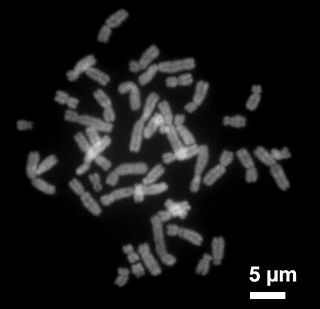科學哲學
From Wikipedia, the free encyclopedia
Remove ads
科學哲學(粵拼:fo1 hok6 zit3 hok6)係哲學一門,亦係科學嘅基礎,泛指從事科學相關工作嘅人對於「科學係乜,以及應該點樣搞」嘅諗法。科學哲學相關嘅討論會涉及以下嘅課題:

根基
内文:經驗主義
睇埋:知識論
嗌法起源
哲學呢隻詞語一般係指緊某一個學科,但係响廣義上嚟講,呢隻詞語仲可以攞嚟指「一個人或者一班人,對於做某一樣嘢嘅基本信念」-所以粵語口語可以有做人哲學呢隻詞語,指一個人對於「做人」呢樣嘢嘅諗法同信念。按照呢套思考方法,科學哲學就係指緊做科學相關工作嘅人對於「科學係啲乜」同埋「科學應該點樣搞」呢類問題嘅一套諗法[1]。
基本假設
科學哲學嘅根基係經驗主義:知識論係哲學一門,專門研究知識嘅本質同埋「點樣追求知識」等嘅問題[2];經驗主義就係早喺古希臘嗰陣經已存在嘅一種知識論觀點,主張知識呢樣嘢應該主要甚至乎完全淨係建基於感官體驗嘅-呢種觀點主張,一樣信念要算得上係知識,一定要係能夠直接用感官嚟感受得到,或者係會作出可以用感官嚟驗證嘅預測;呢種觀點會拒絕神秘主義同埋冇得客觀噉驗證嘅信念,覺得呢啲信念唔可以算係知識,會嗌呢啲嘢做「超自然」[3]。
順帶一提,「要靠感官嚟了解宇宙」(科學)就表示求知者實係當咗以下呢幾點成立[4][5]:
- 喺人類以外有一個客觀嘅真實世界,而呢個真實世界係所有理性嘅觀察者(rational observers)共享嘅。
- 呢個真實世界並唔係完全混亂嘅,而係俾一啲有規律嘅自然法則控制住嘅。
- 人可以透過有系統嘅實驗同觀察嚟去發現呢柞自然法則。
一般認為,以上呢三點好合乎直覺,不過喺廿一世紀初嘅學界,都有啲哲學家同物理學家喺度對呢三句嘢嘅真確性作出批評同質疑[6]。
可否證性
内文:可否證性
可否證性可以話係科學哲學嘅最基本概念:呢個宇宙裏面有數唔嗮咁多個可能嘅諗法,但當中大半嘅都係冇可否證性呢種特質;如果話一個諗法「有可否證性」(is falsifiable)意思即係話,個諗法有可能透過感官嚟驗證。舉兩個例說明:
- 「喺而家呢一刻時間,阿松左手上面有個橙」(假設橙呢個詞有個明確定義)呢句嘢有可否證性;噉係因為研究者只要用對眼望吓阿松左手上面係咪真係有個橙,就可以驗證句嘢係真定假,如果佢見到阿松手上咩都冇,就可以證實句嘢係假-喺最少一個可能情況下,句嘢會俾人證明係一個錯嘅預測。
- 一個睇相佬話「阿松今年可能會有大病」(假設大病呢個詞有個明確定義)呢句嘢就未必有可否證性;想像家陣阿松真係有大病,就會「證實」句嘢,但現實表明咗,就算阿松冇大病,睇相佬大可以話「我淨係話阿松『可能』會有大病啫嘛」-無論個結果係點,睇相佬都有得話佢講啱咗,所以實際上根本就冇可能知個睇相佬係咪真係做咗個準確嘅預測。
可否證性呢家嘢喺科學上好緊要:如果一個理論或者假說冇可否證性嘅話,科學家冇可能透過觀察或者實驗嚟驗證睇吓佢係唔係真係真確-觀察同實驗係科學嘅根本-亦即係話佢根本就唔係科學嘅範疇,所以科學家基本上都唔會理呢啲噉嘅嘢[7][8]。
例如牛頓嘅萬有引力定律有可否證性。呢條定律講嘅係,是但搵兩嚿有質量嘅物體,兩嚿嘢之間會互相產生一鼓力 吸引住對方。呢股引力嘅大細同兩嚿嘢嘅質量相乘()成正比,同佢哋之間嘅距離嘅平方()成反比,同兩嚿嘢嘅化學特性唔啦更。牛頓佢仲提出咗一條數學方程式嚟計兩嚿嘢之間嘅引力[9]:
- ,當中 係一個常數。

萬有引力定律同條方程式有可否證性:如果科學家搵到兩嚿物體,兩嚿嘢之間嘅引力
- 唔係同兩嚿嘢嘅質量相乘成正比嘅;
- 唔係同兩嚿嘢之間嘅距離嘅平方成反比嘅;或者
- 同兩嚿嘢嘅化學特性有關係
嘅話,研究者就可以否決呢條定律,或者最少話條定律根本「唔係萬有」(宇宙入面至少有一啲嘢係唔跟呢條定律嘅)。事實上,科學家亦都有做過好多嘢嚟試呢條定律:由 17 世紀開始,呢條定律就俾數以千萬計嘅科學家攞嚟計好多嘢,好似係啲物體跌落地嘅速度、太空船起飛需要嘅力或者係行星嘅公轉呀噉,而一路以嚟,呢條定律都做到相當準嘅預測,好經得起考驗。於是科學界就覺得呢條定律係一個好好嘅科學理論,到咗廿一世紀初都仲會用到[註 1][10]。
相比之下,19 世紀尾佛洛伊德嘅精神分析就廣泛噉俾人認為係一個典型嘅冇可否證性嘅理論[11]。根據精神分析理論,人嘅潛意識度有好多俾人壓抑住嘅慾望,而且精神分析理論仲好興講話呢柞慾望可以引致精神病,但古典嗰套精神分析理論對於點樣量度呢柞慾望同埋「慾望有幾俾人壓抑就冇乜嘢標準」。例如係抑鬱症噉:精神分析話抑鬱症可以係因為人壓抑自己嘅慾望壓抑得太勁而搞出嚟嘅,但就算個病人冇抑鬱症嘅症狀,個分析師都有得話「係因為個慾望太過壓抑,壓抑到出唔到症狀」-根本冇可能知個分析師係唔係真係做咗一個準確嘅預測。呢個理論冇提出一個方案去量度壓抑,搞到用套理論嘅根本冇辦法知個病人係唔係真係壓抑咗啲慾望,冇得量度就自然冇得驗證佢係咪真。到咗廿一世紀初,心理學上嘅研究都唔會再點理精神分析呢套理論,而會當套理論係假科學-望落似科學,但查實唔合科學原則嘅學說[11][12]。
Remove ads
歸納

内文:歸納
歸納係科學嘅基本諗嘢方法。歸納係指緊由啲個別嘅事例嗰度去推斷出一啲普遍嘅原理[13]。歸納相對於數學家成日用、可以得出肯定結論嘅演繹推理,歸納唔會保證到個結論係一定真確,但會靠住有大量事例嚟去提升自己個論證嘅強度,好似係以下嘅論證噉樣:
- 前提 1:所有人類嘅壽命都係有限嘅;
- 前提 2:蘇格拉底係個人;
- 結論:蘇格拉底嘅壽命係有限嘅。
呢個係一個典型嘅演繹推理論證:雖然話係有得詏佢嗰兩句前提到底係咪真,但事實係如果佢嗰兩句前提係成立嘅,噉佢個結論邏輯上都一定會成立-喺一個有效(valid)嘅演繹推理論證入面,前提嘅真確性會保證到個結論嘅真確性。呢種思考方式喺數學上成日都會用嚟證明一啲定理。同呢種諗嘢方式唔同,响一個歸納性質嘅論證入面,前提嘅真確性冇辦法保證到結論嘅真確性,淨係可以靠大量嘅事例嚟提升個論證嘅強度,好似係以下呢個論證噉[14]:
- 前提:我之前見過嘅天鵝都係白色嘅:
- 結論:呢個世界上所有天鵝都係白色嘅。
呢個係一個典型嘅歸納論證:就算個前提係真,都保證唔到個結論係真-前提入面嗰個「我」並冇見過嗮世界上所有嘅天鵝,而事實係世界上有黑天鵝,個觀察者會噉諗只不過係因為佢咁啱未見過黑天鵝;如果個觀察者想佢個論證強啲嘅話,佢就一啲要去見多啲天鵝:如果佢睇勻嗮全歐洲嘅天鵝,呢個論證嘅說服力會比較強;相反,如果佢淨係見過英國嘅天鵝,噉呢個論證嘅說服力會渣好多[14]。
科學歸納
科學(用感官體驗驗證得到嘅方法求知)呢樣工作用嘅正正就係歸納呢種諗嘢方式:喺驗證「萬有引力係真嘅」呢句說話嗰陣,牛頓觀察到一個蘋果由樹上面跌落嚟,佢亦都觀察到好多嘢都係跟呢條規則,但佢始終冇辦法去真係「證明」呢個宇宙入面真係所有嘢都有萬有引力-因為可能喺宇宙嘅某啲黑暗角落度會有啲冇引力嘅嘢,只係人類仲未搵到。科學家靠嘅係實驗同觀察,佢哋冇辦法好似數學家噉真係證明佢哋講嘅嘢,只可以靠住重複做實驗同觀察嚟加強自己嘅論證,但始終係冇方法排除一個可能性:呢個宇宙入面可能真係有啲嘢係唔跟佢哋諗出嚟嗰啲定律嘅,只係佢哋未搵到呢啲嘢[15][16]。
因為噉,喺正式嘅科學文獻入面,科學家好少可會話自己「證明」咗乜嘢乜嘢理論,只係會話「觀察同實驗結果撐嗰個理論」,而且佢哋仲會好積極噉去搵新數據,睇吓呢啲佢哋之前未見過嘅數據會唔會推翻舊嘅理論。如果會嘅話,佢哋就會開始諗新理論,或者睇吓點樣將舊嗰個理論改吓等佢可以同新數據夾得埋,令個理論成為一個更加貼近現實嘅模型[14]。
Remove ads
科學方法

内文:科學方法
睇埋:統計學
科學方法係根據科學哲學嚟追求知識嘅過程。搞親科學嘅人冚唪唥都係用科學方法嚟研究自己在意嘅現象嘅-由物理學同生物學等嘅自然科學至經濟學等嘅社會科學都係噉。科學方法有以下呢幾個步驟[17][18]:
- 喺日常生活嗰度觀察吓研究緊嘅現象,對現象嘅運作原理等提出問題,即係要諗吓呢啲現象係咪而家有嘅理論(嚴格上係指會做有可否證性嘅預測嘅知識體)解唔解釋得到,而如果唔得,就要諗吓有冇啲乜嘢新嘅定律有可能解釋到呢柞現象;
- 基於諗出嚟嘅新定律或者理論,諗一啲有可否證性嘅假說(指由理論嗰度衍生出嚟,有得直接觀察但係未經證實嘅講法)出嚟;
- 「如果我提倡嘅呢個理論係真確嘅,理應會見到噉噉噉嘅現象...」
- 做實驗或者有系統性嘅觀察,睇吓嗰柞假說係咪真確(驗證個假說)[19];
- 分析手上嘅數據;
- 做總結-
- 如果數據撐條新定律嘅話,噉就將呢個新發現夾入去現有嘅理論入面,形成一個解釋力更勁嘅新理論;
- 如果數據唔撐條新定律嘅話,就重新諗過;
- 「如果我呢個理論係真確,呢個實驗理應會得出某個某個結果,而個實際嘅實驗結果係...」
- 重複[20]。
科學方法係一個循環性嘅過程-科學家會係噉重複上述嘅工序嚟豐富人類知識,因為次次搵到新嘅知識之後,好多時即刻又會有新嘅謎團;好似係牛頓萬有引力定律噉,當啲物理學家發現咗佢哋觀察到嘅嘢都係跟住呢條定律之後,佢哋又要開始去諗「萬有引力係點嚟」呢條新問題同埋做新實驗嚟搵答案。於是乎,人類喺知識上就不斷噉有進步同發現新嘢。
量度
内文:量度
量度係科學方法必然會涉及嘅一樣嘢,泛指搵出一個變數嘅數值[21]:喺做一份科研嗰陣,研究者要首先搞清楚咗用緊乜嘢理論、驗證緊乜嘢假說、同埋驗證緊嘅假說入面有邊啲變數;例如想像家陣有位物理學家喺度做狹義相對論方面嘅研究;狹義相對論主張,當一嚿物體郁嘅速度愈近光速,嚿物體過嘅時間就會愈慢(時間膨脹)[22],要測試呢個諗法,就要考慮到兩個變數-一件物體嘅速度同埋件物體過嘅時間,然後研究者要搵柞以唔同速度郁動嘅物體返嚟,睇吓呢啲物體係咪真係「郁嘅速度愈近光速,過嘅時間就愈慢」(睇吓個假說係咪真確)。喺成個過程當中,研究者梗要有方法知每件物體嘅速度同埋「過咗幾多時間」-將啲變數嘅數值由「未知」變成「知道」嘅過程就係所謂嘅量度[23]。
|
好多時,同一個變數可以用幾個唔同嘅方法量度,而唔同方法好多時都各有優劣:好似係响量度時間嗰陣,研究者可以用沙漏或者係原子鐘嚟去度;前者嘅設計原始啲,而且因為要靠對肉眼睇有幾多沙落咗下格,而人眼又俾好多外在因素影響,所以次次度出嚟嗰個數值都唔多同-唔多靠得住;度長度嗰陣可以攞軟尺同間尺去度,但軟尺同間尺都有好多唔同款-有啲淨係度得到厘米,但有啲有埋毫米,後者會精確啲[24]。量度方法呢家嘢喺科學入面係一條幾受關注嘅議題,好多時科學上嘅重大發現都係靠發明啲新嘅量度方法先至做到嘅,而且科學家喺評鑑一份科研嗰陣,好多時都會喺度詏嗰份研究用嗰啲量度方法夠唔夠準確同精確[25]。
科學理論

内文:科學理論
科學理論係指科學上嘅理論。「理論」呢個詞語喺日常用語度好多時都係指「一啲可能有根據,但未必真係有根據嘅講法」,好似係英文入面就有「只係一個理論」呢句嘢,意思即係話某一個諗法只係斷估,未必信得過;而喺呢個咁廣泛嘅定義之下,好多嘢都可以算係「理論」-例如係「宇宙係由上帝創造嘅」呢句嘢,喺呢個噉嘅定義之下都算係理論[26]。
理論特性
喺廿一世紀初嘅科學界,一個「科學理論」係指一嚿知識體-一柞描述緊某啲現象嘅講法-而個理論係達到以下嘅呢啲條件[27]:
- 個理論本身會做一啲有可否證性嘅預測;
- 個理論會同由實驗同觀察度攞到嘅數據夾得埋;
- 個理論有嚟自唔同源頭嘅證據支持。
例子:進化論係廿一世紀初嘅科學上好有影響力嘅一個科學理論。根據呢個理論嘅最廣義版本,一個種群嘅生物內部各基因嘅出現頻率會隨住時間而一代一代噉慢慢改變,呢個過程就係所謂嘅進化[28],而且進化仲有得細分做微進化同埋宏進化兩種,當中後者係指進化引起嘅變化大到令進化前後兩個種群成為咗兩個唔同嘅物種[29];進化論合乎嗮科學理論嘅三大特性:
假說
内文:假說
睇埋:肯定後項
假說喺科學上係指一啲由科學理論嗰度推理出嚟(「如果個理論係真,噉 H 呢句嘢應該會係真」,當中 H 就係一句假說),有可以直接噉驗證,但未經證實。每當有科學家提出新嘅理論去解釋某啲打前解釋唔到嘅現象嗰陣,科學界通常第一時間想做嘅嘢就係會想去搵啲方法嚟去驗證吓個理論。佢哋會由個理論嗰度開始諗吓「如果個理論係真嘅,會引起啲乜嘢假說」,跟住佢哋就會去設計啲實驗出嚟去驗證吓呢啲假說。例如係頭先講咗嘅進化論噉[32]:
- 根據進化論,一個種群有可能喺短時間之內啲基因頻率一代代噉變;
噉如果攞(例如)一個種群嘅飛蛾嚟睇,設 做其中一個基因喺呢個種群入面出現嘅頻率;如果進化論係真確嘅,應該會有最少一個 會喺幾代之間唔同咗-而假設有現代嘅遺傳學知識,「會有最少一個 會喺幾代之間唔同咗」呢句假說有得靠直接嘅觀察嚟驗證。喺成個諗嘢過程入面,研究者用咗「如果...,噉應該...」(if... then...)嘅邏輯-「如果 A 係真,噉 B 應該都會係真」,既然係噉,如果發現咗 B 唔係真,噉 A 就應該唔係真。「有最少一個 會喺幾代之間唔同咗」呢句嘢喺呢度就係一個假說:句嘢由進化論嗰度推理出嚟,有得用觀察驗證[33]。
變數
内文:變數 (科研)
變數係科學理論同假說實會有嘅嘢。一個變數係指宇宙入面一個數值有可能變化、兼且係形容緊某啲嘢嘅特性。例如智能同性格呢啲特性都可以攞嚟形容人,而且呢幾樣嘢個個人都唔同(數值可以變化),所以呢三個都係屬「攞嚟形容人」嘅變數。體積同質量呢啲可以攞嚟形容人或者物件都得,而且呢兩樣嘢個個人件件物件都可以唔同,所以都係屬於「形容人同物件」嘅變數[34]。
變數係科學嘅關鍵,因為基本上科學成個目標就係要去了解宇宙咁多嘅變數之間有咩關係。例如以下呢柞科學定律都係講緊某一啲變數之間嘅關係:
- 牛頓萬有引力定律:
- 歐姆定律:
- 需求定律:一條經濟學(研究資源分配嘅社會科學)上嘅定律;需求定律係講緊話,假設第啲因素唔變,當一件貨品嘅價錢升,對件貨品嘅需求量(指消費者有能力同肯買幾多件)會跟住跌,反之亦然;簡單嚟講,即係話「一樣嘢愈貴就愈少人買」。呢條定律入面有兩個變數:價錢同需求量,而呢條定律話佢哋之間有住反比嘅關係[36]。
- 海伯法則:神經科學(研究神經系統嘅科學)上嘅一條定律,講喺個腦入面,兩粒神經細胞愈係會一齊射神經脈衝(簡單講就係訊號),兩粒細胞就愈係會連埋一齊。呢條規律同埋佢嗰柞變種大體上有兩個變數:「兩粒神經細胞有幾常會一齊射脈衝」同埋「嗰兩個神經細胞之間嘅連結有幾強」,而呢條規律話呢兩個變數係成正比嘅[37][38]。
無論係邊個學科都好,科學嘅重點基本上就係想搵出變數同變數之間有啲乜嘢關係,而「知道嗮成個宇宙入面所有嘅變數同埋佢哋之間嘅相互關係」可以話係科學嘅終極目標。變數嘅重要性亦都反映咗喺科研文獻嘅書寫嗰度:喺寫一份科研文獻嗰陣,寫嗰個研究者一般都一定要搞掂一樣嘢-講清講楚自己嗰啲假說度有啲乜嘢變數喺入面,同埋係呢柞變數點樣定義[39]。
奧坎剃刀
内文:奧坎剃刀
次次學界發現親啲乜嘢前所未見嘅自然現象,相關學科嘅科學家就會各自噉諗柞理論出嚟去解釋佢。而當有成柞理論都係喺度嘗試緊解釋同一柞現象嗰陣時,啲科學家就焗住要揀返個最好嘅理論。於是乎科學家就諗咗一啲準則出嚟去決定一個理論「點樣先至為止好」。奧坎剃刀就係其中一條最出名嘅評鑑基準。奧坎剃刀呢條原則查實就好簡單:假設第啲因素不變,科學家會比較鍾意用簡潔啲嘅理論;即係話如果有兩個科學理論都係解釋緊同一柞現象,而佢哋嘅證據強度同解釋力一樣咁強嘅話,科學家一般都會揀(例如)用變數少啲、或者方程式嘅數量少啲嗰個理論[40]。
奧坎剃刀嘅存在原因有好多:一方面,因為西人自古以嚟就覺得優雅就係「用最少嘅氣力做最多嘅嘢」-呢點喺佢哋嘅藝術方面都睇得到;而另一方面,呢條準則亦都同可否證性有啦掕-當一個理論牽涉到好多個變數嗰陣,驗證個理論嘅時候就愈難控制嗮所有嘅變數,而呢點令到用個理論嘅科學家容易搵到啲事後孔明嘅解法嚟去為自己個理論辯護-間接令到佢更加難驗證[41]。
Remove ads
睇埋
註釋
引咗
拎
Wikiwand - on
Seamless Wikipedia browsing. On steroids.
Remove ads















